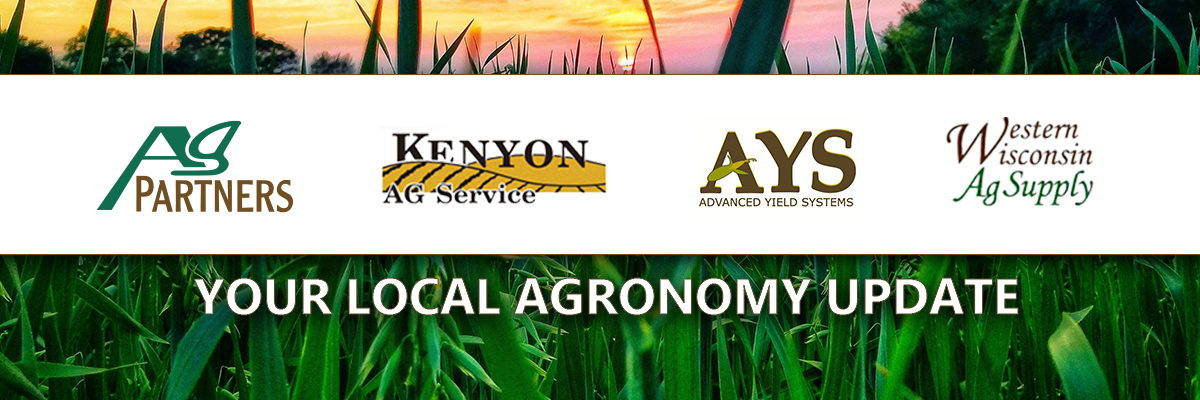
The one-stop-shop to hearing everything you need to know about what is happening in your fields this week.
This week’s featured agronomists are:
Courtney Wolf – Belle Plaine
Hailey Dykes – Pine Island
Erin Stackhouse – Morristown
Larry Veith – Elgin
Scroll down to hear from your local agronomist.
WEST
Belle Plaine – Le Center – Le Sueur
 Courtney Wolf
Courtney Wolf
We got some much needed rain in the area last weekend and the cooler temperatures this week are only going to help the corn and soybeans. With the improved weather conditions it is a good idea to start thinking about a preharvest inspection of your fields. It is a great time to get out to the fields to check for stalk rots and to make sure you do not have corn lodging from rootworms. The common stock rots to watch out for are Anthracnose, Gibberella, and Fusarium. Below are some pictures and descriptions of each.
Anthracnose can appear on the leaves as uneven round spots, tan in the center and yellow, red, or brown borders. It will also show up as top dieback, this is when the top of the plant has yellowing, or dead leaves and it progresses downward on the stalk. As the disease progresses black lesions will appear on the stalk, and the pith will be rotted.
 Gibberella (left) is going to have a reddish or pink stalk pith. There will not be any lesions on the stalk, but there might blue to black bodies look like dots by the nodes. Best way to find is to cut the stalk open and look for any discoloration.
Gibberella (left) is going to have a reddish or pink stalk pith. There will not be any lesions on the stalk, but there might blue to black bodies look like dots by the nodes. Best way to find is to cut the stalk open and look for any discoloration.

Fusarium (right) is going to have a shredded looking pith. It will be mostly white, might have some pink to a salmon color. When a stalk is pinched it will easily collapse. It does not have any black bodies or lesions. There may be some brown streaks on the lower internodes.
Please contact your local Ag Partners Agronomist to set up a time to go do a preharvest check or if you have any questions. Have a safe harvest!
EAST
Pine Island – Cannon Falls – Goodhue – Lake City
 Hailey Dykes
Hailey Dykes
Corn fungicide has been a whirlwind these past couple weeks. Wind and weather have thrown a wrench in our plans, but rains have been very much welcomed at varying rates throughout our geography. Much of the corn aerial fungicide acres should be wrapped up within the week and soybean fungicide is mostly wrapped up except for some of the later planted acres. Most soybeans are now in or are transitioning into the R4 stage (full pod). At this stage pod growth is rapid and seed development begins. As for diseases and insects in soybeans—aphid pressure has been relatively low this year in soybeans thus far, and not too many diseases have been showing up. Some SDS (Sudden Death Syndrome) has been showing up on some of the lower laying pockets of fields as well as some sidehills.
Tar Spot has been the big hot topic item the whole season, but now the fungus has been flaring up in greater incidences in some fields this past week. “What is Tar Spot and what should I look for in my fields?” It is a fungus that produces black specks, or “Stromata” on the leaves, stems and husks of affected corn plants that do not rub or scratch off leaves. These stromata can also be surrounded by narrow tan halos called a “fish-eyed lesion”. Spores can be windblown long distances and can overwinter on corn residue, releasing spores the following season.
Tar Spot infections kill off photosynthetic process within the leaves, causing grain corn and silage to dry down extremely fast. Silage corn with high Tar Spot severity as well as other diseases can potentially result in poor fermentation and bunker packing, which can result in increased fungal growth and potential increases in mycotoxins.
Reach out to your local Ag Partners agronomist if you have any questions but have a great rest of the summer!
Photo: Tar Spot (Left) – Northern Corn Leaf Blight (Bottom Right) – Tar Spot Leaf (Top Right)

CENTRAL
Morristown – Wanamingo – Kenyon
 Erin Stackhouse
Erin Stackhouse
Fall Checklist
WOW! Where has summer gone? I feel like it was just a few weeks ago we were frantically getting this crop planted. Now that spraying has wrapped up and county fairs are in full swing, September will be here before we know it. Now is a great time to start thinking about Fall Prep!
- Wrapping up 2022 AYS Data
- Make sure your AYS specialist has all the details on your 2022 crop.
- Trials: If you haven’t told your AYS Specialist of on-farm trials, make sure you do so they can be prepared to analyze data & return results to you as soon as possible after harvest.
- Combine Setups
- Contact your AYS Specialist once your combine monitor is ready for the setup file & variety tracking information
- Fertilizer Plans
- Talk with your Agronomist about your Variable Rate Fertilizer recs
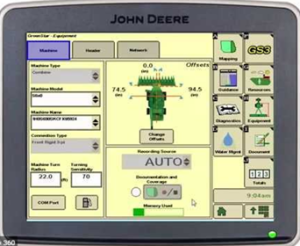 |
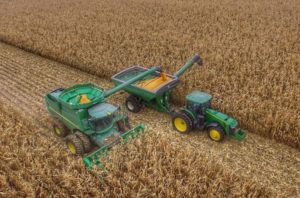 |
SOUTH
Elgin – Lewiston – Stewartville

Larry Veith
Scouting Your Fields Now for Continued & Better Success in 2023
As we enter the home stretch on the 2022 crop production year, many if not most of the agronomic decisions for this cropping year have already been made. Now we await the much-anticipated harvest- to measure just how well our decisions and the weather helped, or hurt, the outcomes we harvest. It’s important to watch this crop to the finish line and to begin to question ourselves in ways to improve for 2023.
Walk your fields, take pictures with your cell phone, take notes, and take a closer look as to what worked well and what didn’t. Below are some pictures that might ring a bell in regards to digging deeper now, while the opportunity to investigate it is still there. Goosenecked corn, nitrogen deficiencies in corn, volunteer corn in soybeans, and waterhemp weed escapes in soybeans are just some of the things that beg the question, why?
Take the time now to plan for next years success!
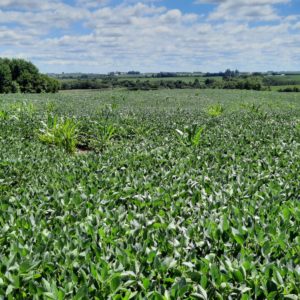 |
 |
| Volunteer corn in soybeans | Waterhemp escapes in soybeans |
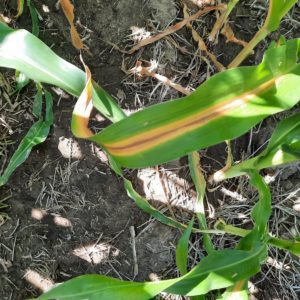 |
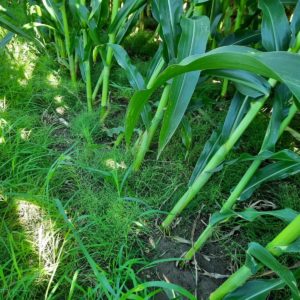 |
| Nitrogen deficiency in corn | Goosenecked corn |


